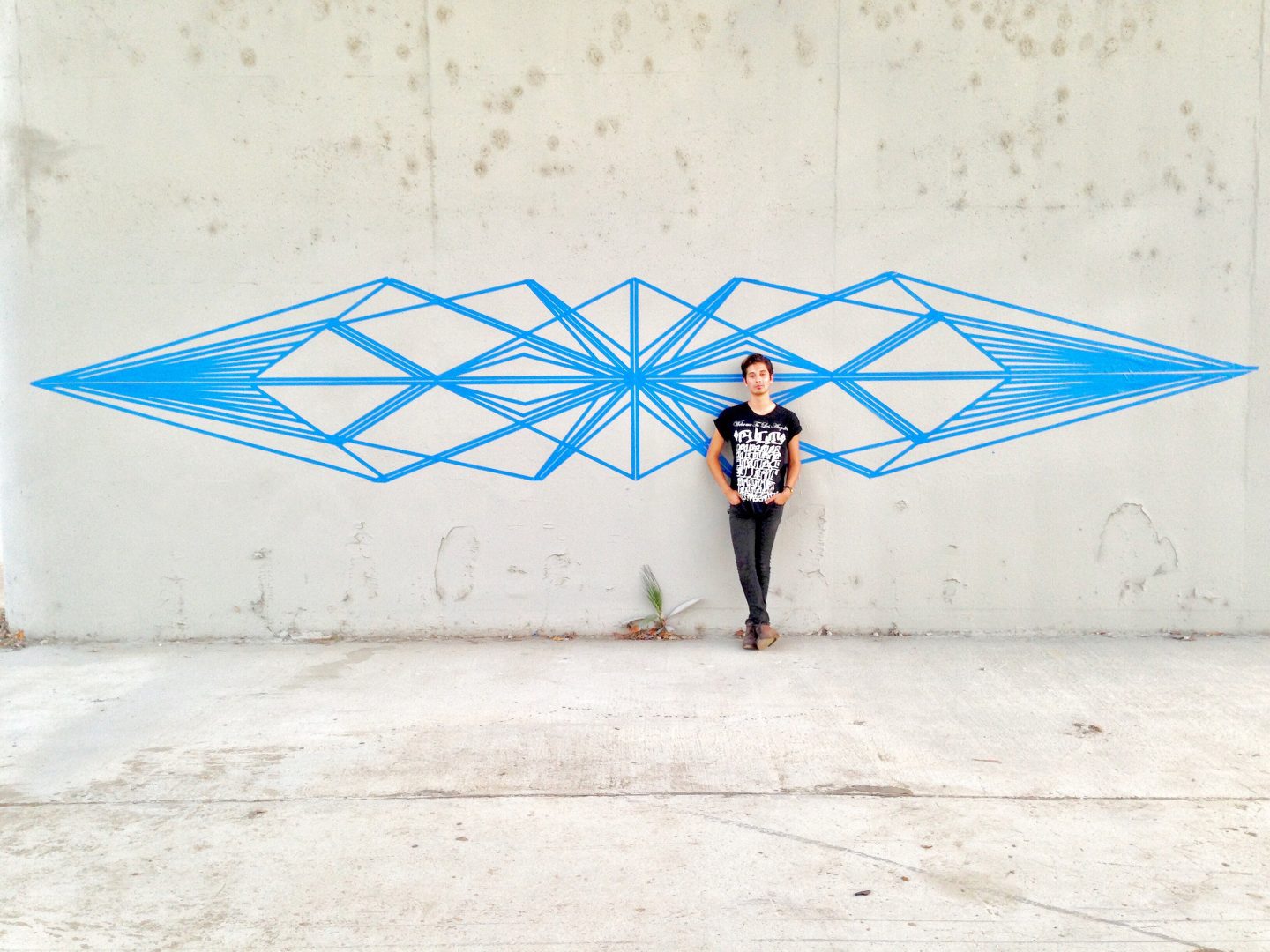
LA based tape artist, Gustavo Fuentes, who goes by the name, Flekz, has created quite a name for himself over the past few years. His larger than life murals and art pieces have made him a global phenomenon in the design world and beyond. Using tape as his medium, Flekz creates one of a kind works of art that beckon for attention, with a measure-free approach which is both liberating and rebellious. His presence online, @_flekz_ has garnered the attention of top brands, celebrities, and private collectors alike.
Drawing from his love of architecture, Flekz’s work uses repetitive design techniques to dance between symmetry and balance, the two key elements to his philosophy. He immerses himself fully in each piece, his energy at the time reflected in his fascinating designs.
Flekz and I had an amazing talk about tape and much more.
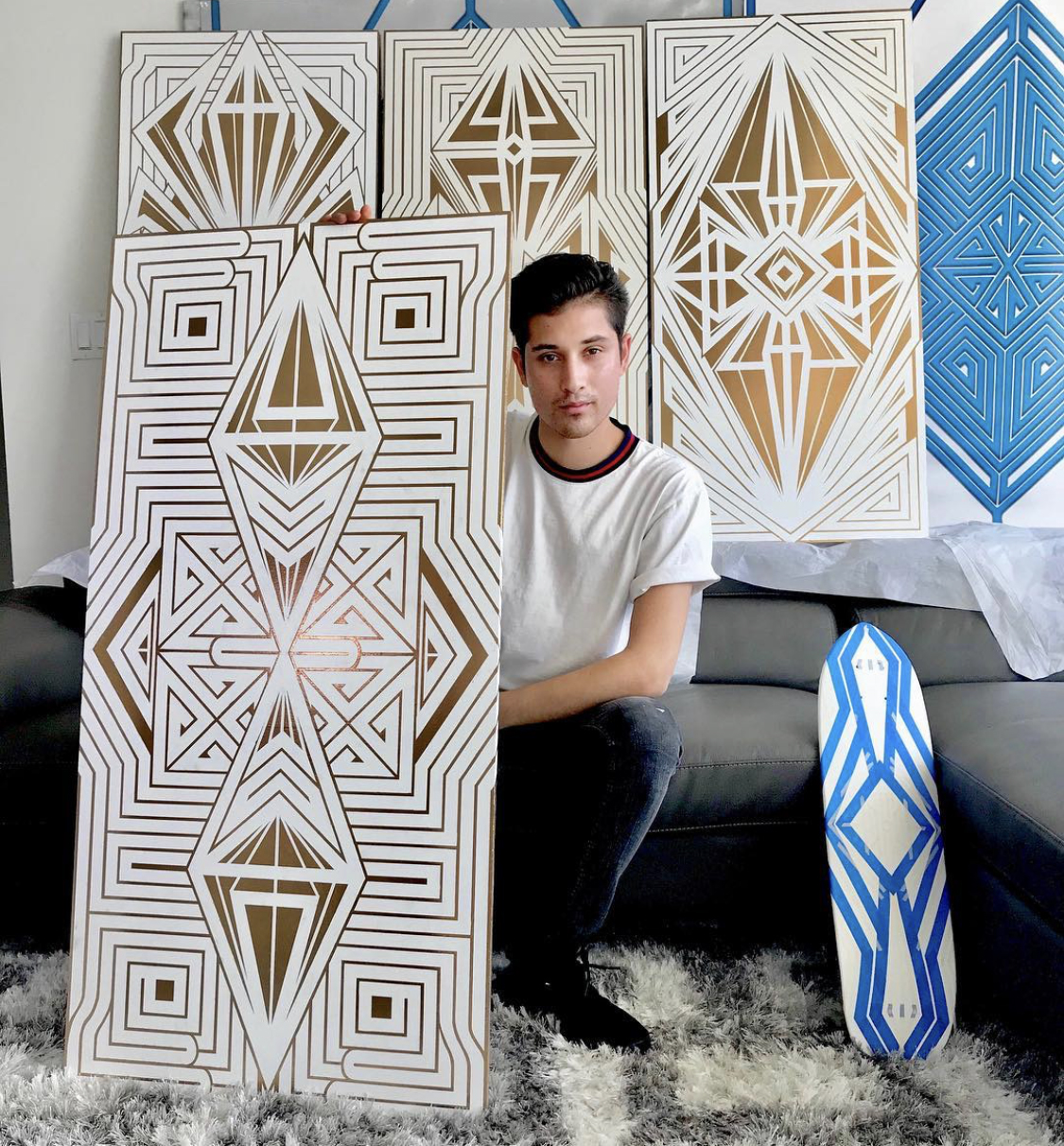
Why tape?
Well, before, I used to create stencils made out of paper. When I was creating those stencils, I used to create very geometric designs and I realized I could transfer them over using tape, which is a lot easier and a faster process to getting those straight lines. Basically reducing the time it used to take creating the paper stencils but now using tape.
How has your process changed over time?
My process has basically not changed at all. If anything, the only thing that has changed is maybe just more detail’s gone into the works
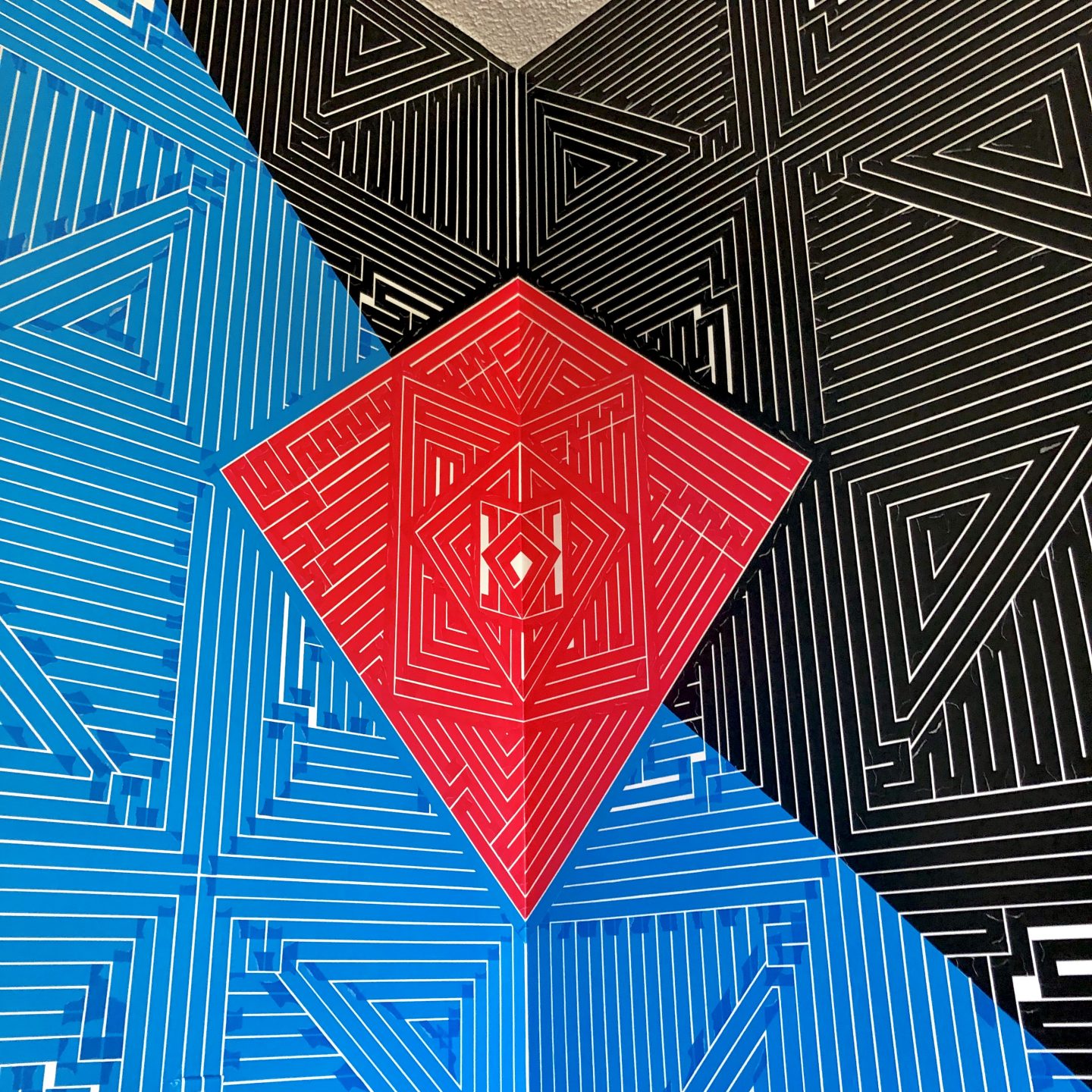
Your pieces are extremely precise and analytical. Do you feel that mirrors your personality outside of your work?
Not at all. I think it’s just one of those things that I put so much priority into my work and just making sure it looks so good, but it does not reflect who I am… although I do want to work as hard as possible in any situation. But definitely my first priority is my artwork.
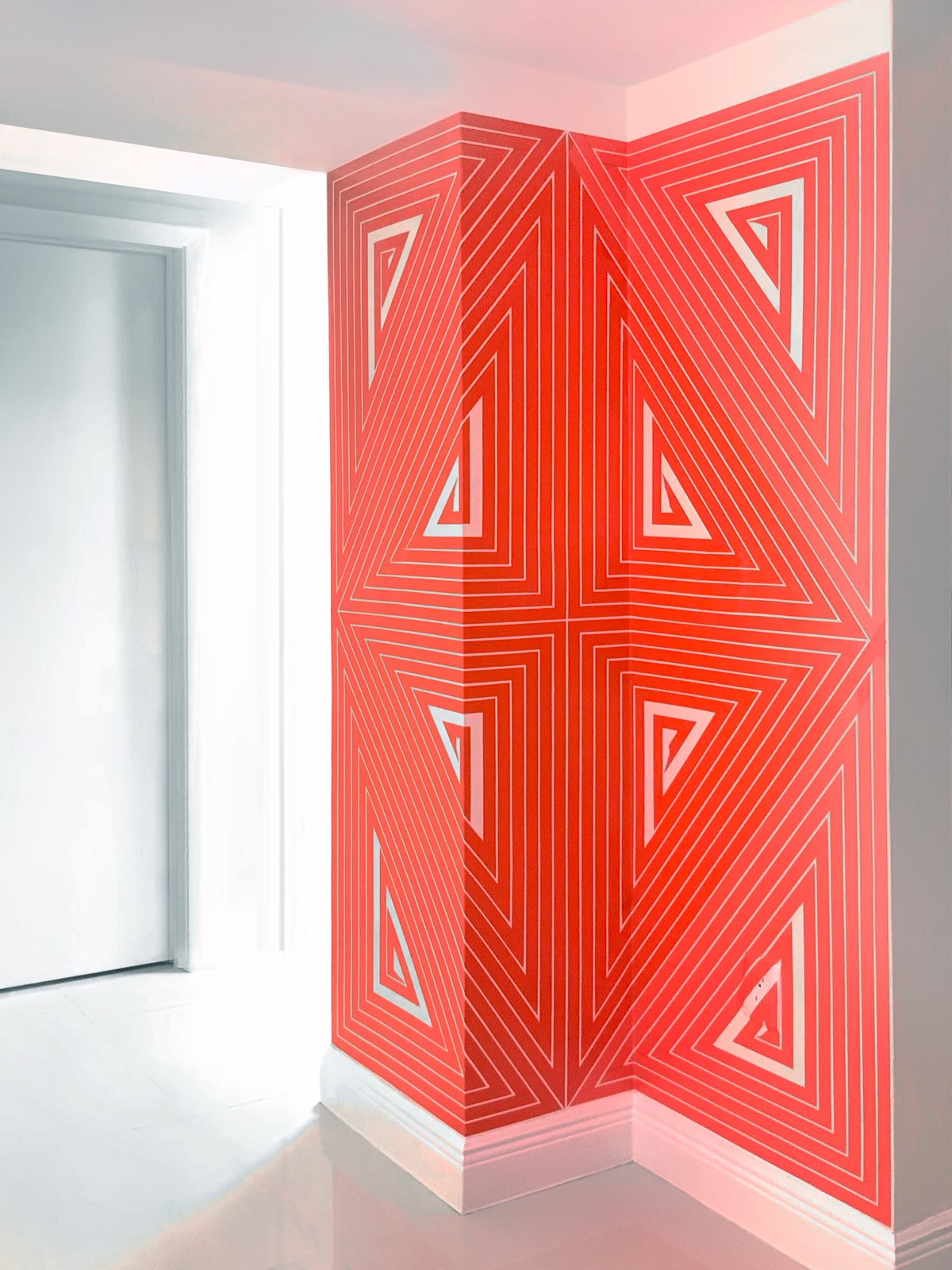
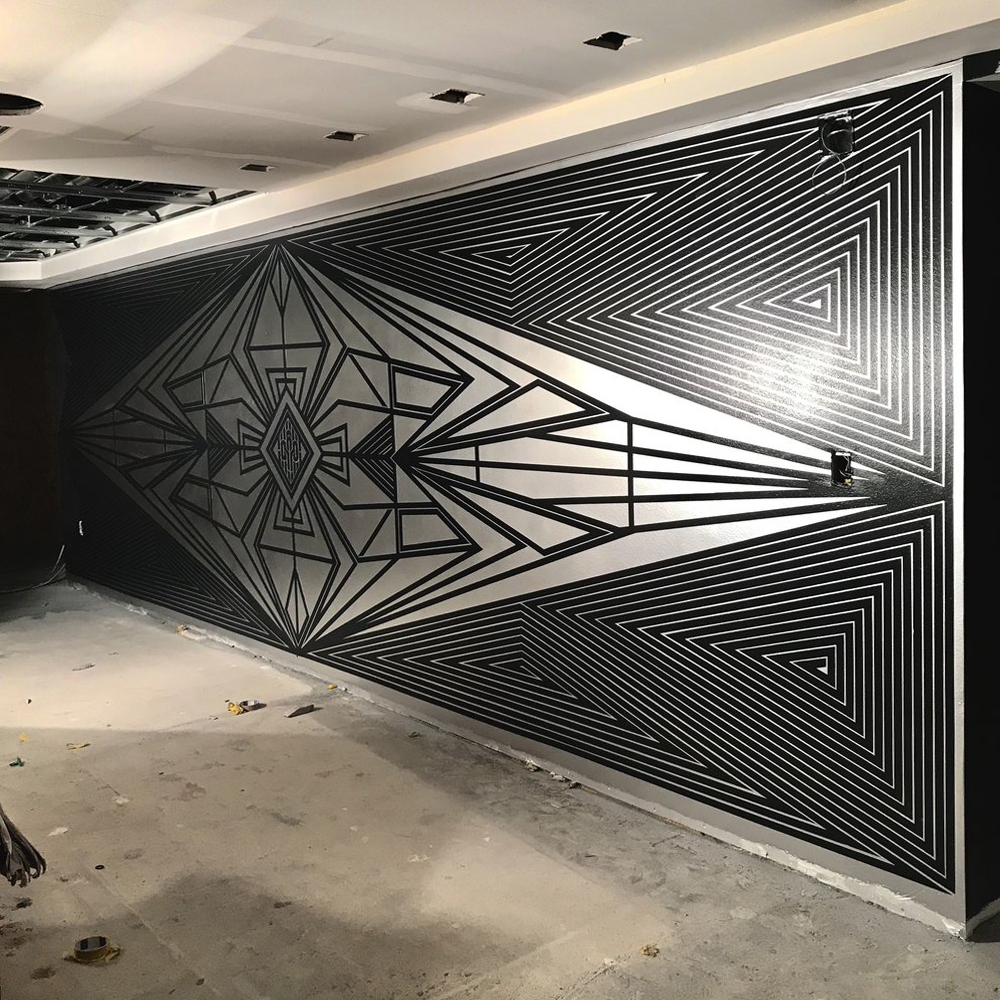
Tell me about the first time you thought to yourself: “Ok I made it”.
Um, the first moment that I thought I made it? I don’t think at any moment; you’ve got to keep working as you probably already know. It’s hard being an artist in general, you know, there’s ups and downs. Well I guess the first moment that I thought I made it was when I first started creating murals in the streets and I had my first show in 2014.
My brother’s friends told my brother: “You should tell your brother to never stop doing what he’s doing. He should continue, it’s definitely something he could make money out of and it’s his passion. At the time, I didn’t even know it was my passion. I didn’t know it was something I wanted to do permanently either. So yeah, I guess that’s the first time I felt that I made it in a way.
Your work has been commissioned by global brands including Nike, Google, BMW, 3M, Adobe, and Ford to name a few. What is your approach when meeting companies for the first time?
I don’t think I have an approach, I think it’s just kind of them acknowledging who I am, especially when you work with big brands. I remember when I first started. For instance, my first biggest project was working with Ford and I kinda lost sight of myself and I ended up working at a station that I felt really uncomfortable in. It was a really tight, small space and it really felt that they were devaluing my work and it was all happening without my control. I regretted it because at the end, my work didn’t look as good as I wanted it to look and I was just not happy with the outcome.
But then I learned from that, and later on when I started working with different companies, I started speaking up like: “Hey you know what, this isn’t gonna look good.” or “You know, I don’t think this suits my image.” Obviously, it’s a very ballsy thing to do. But when I work with a big client, I tell them initially the levels that I feel comfortable working and how I approach my art and how I do it. How I work with a commissioned piece and how I work with non-commissioned piece. How I like to freestyle my work without measurements, and explain those things to them and tell them just so they know how I feel comfortable working. So they know I’m going to take this as serious as possible. But at the same time have them have the experience that they want and the experience that I want.
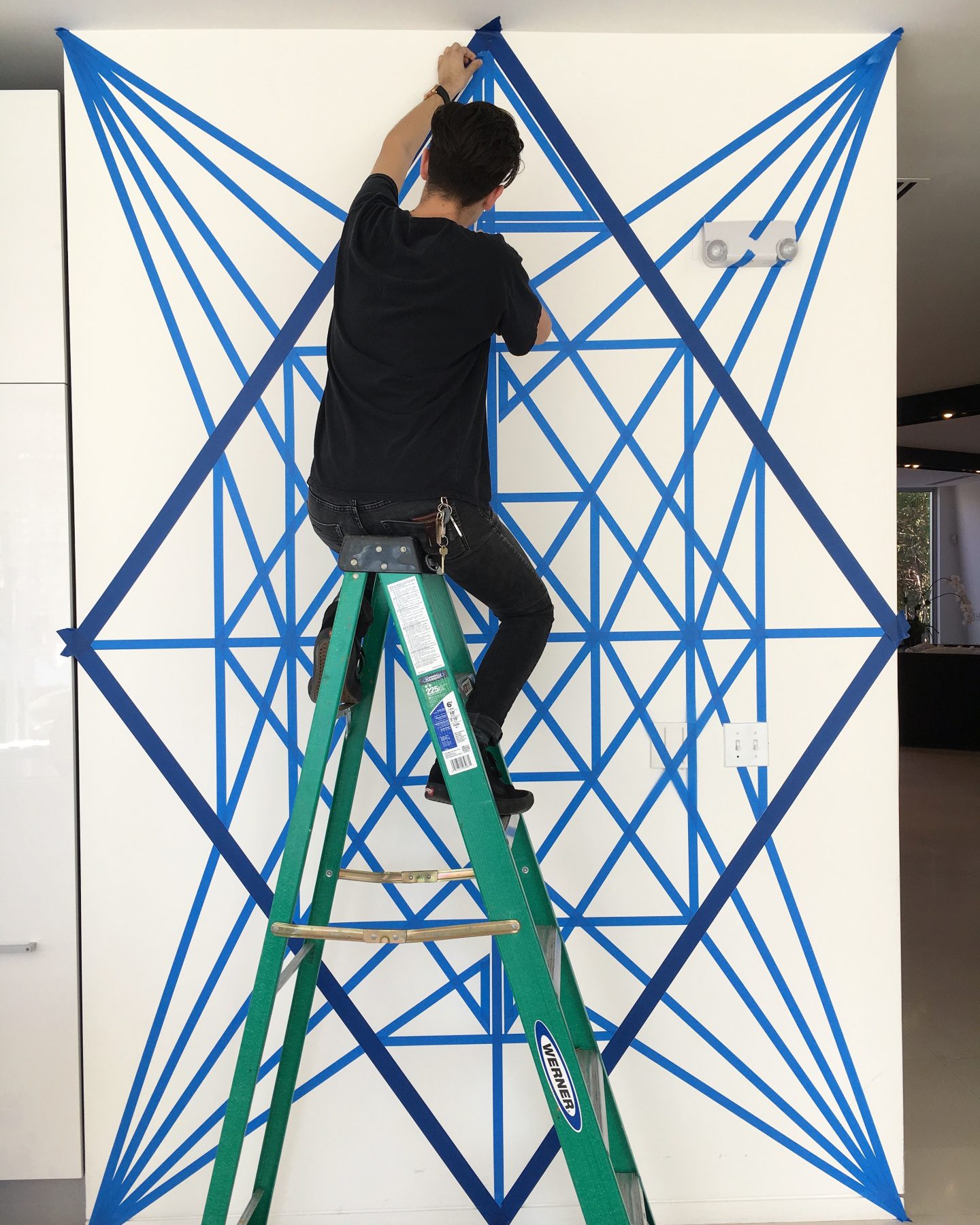
Where or how do you draw your inspiration?
I don’t really, nothing really inspires me. For most of my work, I don’t look at something or someone else’s work or some sort of design and think hey you know what I could use it on my design. I’ve always been into architecture, with the symmetry. Obviously, you can tell from my work. But when I first started creating my design, the first thing that came out, I really liked how it looked. It was this weird maze structural style and I loved it and just wanted to refine it and basically that’s what the outcome of my work has been. Me refining the same design continually and finding new ways to make it better or ways to completely change it so it has its own styles, like different styles of the same style.
Are there surfaces that you’d like to work with in the future?
I would love to work on a car really badly. That’s what I would really want to work on or a plane, or maybe a surface that’s more livable, something people could use on a day to day basis.

You’ve collaborated with Edge Collections, a contemporary wall covering company in Miami that features artists in their collections. How did that come about and how has it shifted your focus on work?It totally did shift my work. It was one of those situations where they’re so professional. Carl Pascuzzi is such a professional person. Working with him, as you know, anything he touches makes it into gold. So, working with him just made me want to get to that level. He’s so calm and collected when he’s working. He never really expresses himself and how he really feels until you’re really close to him, and he’ll tell ya like: “Dude this shit’s dope” and if not, he’s not gonna tell you anything. So it’s just keeping that cool, that’s what I’ve learned from working with Carl, just keeping my cool instead of being super excited.
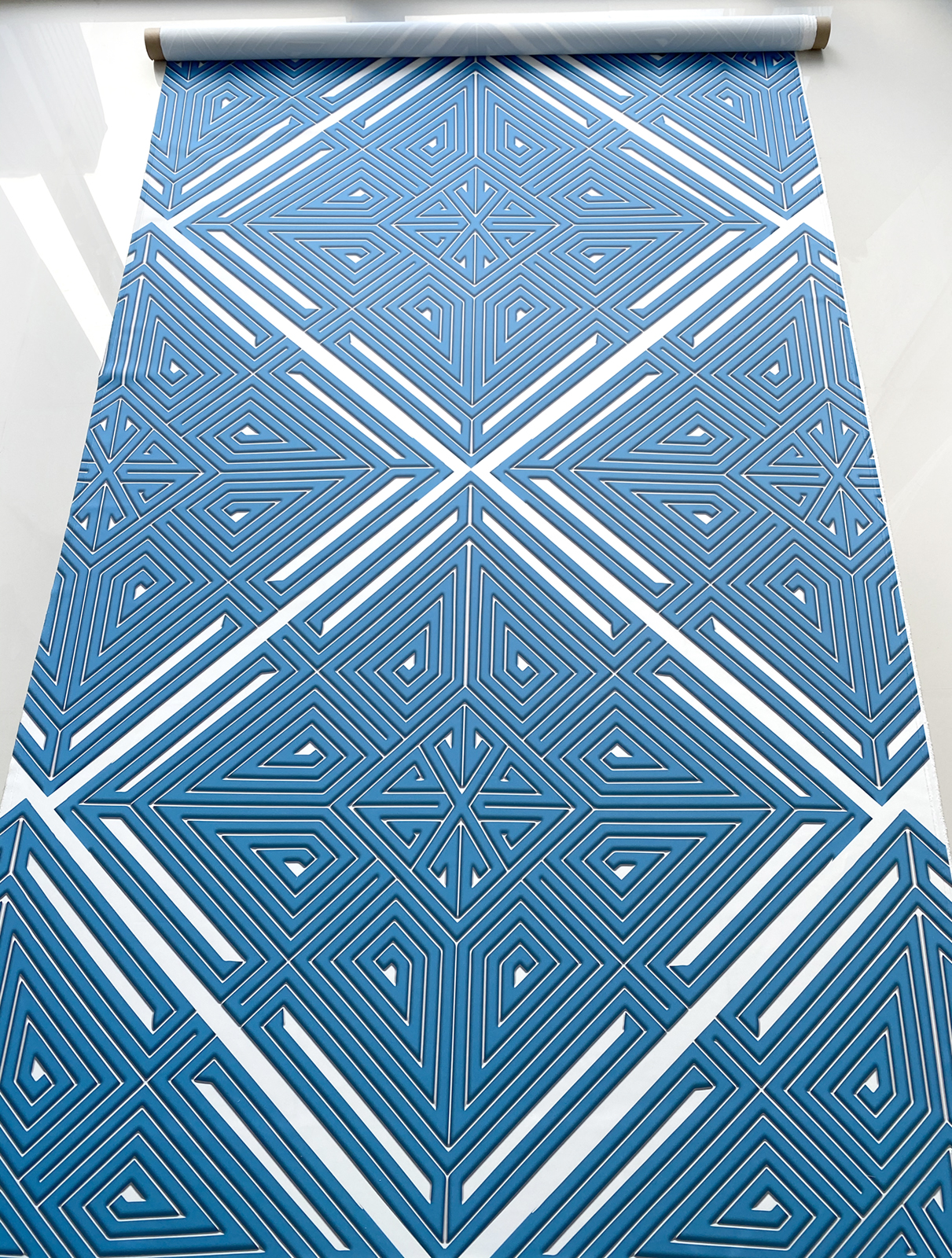
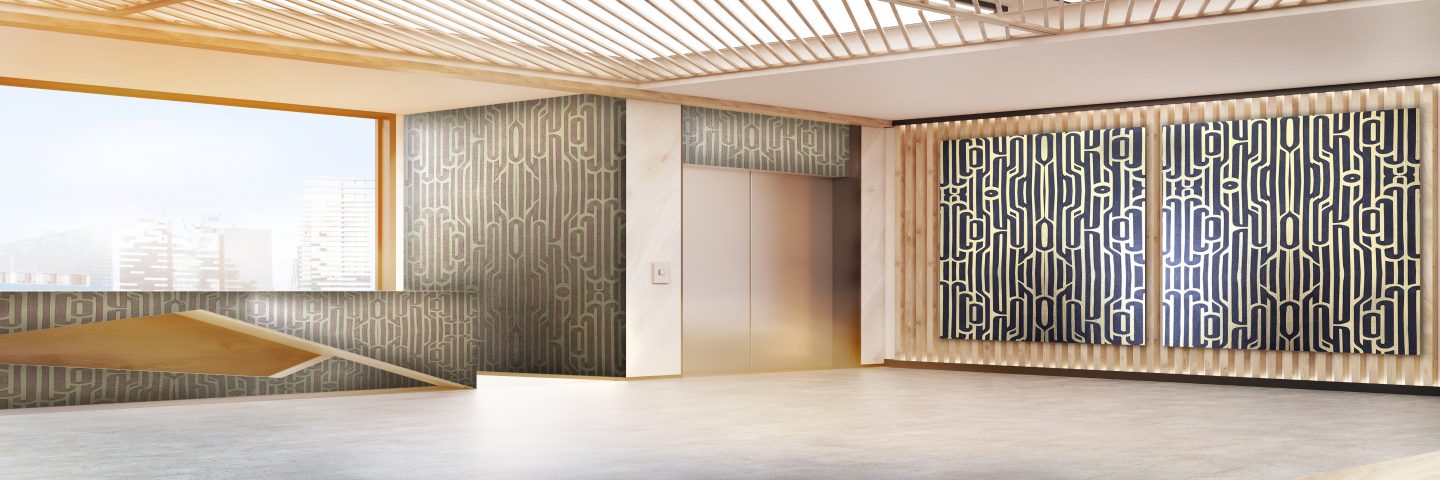
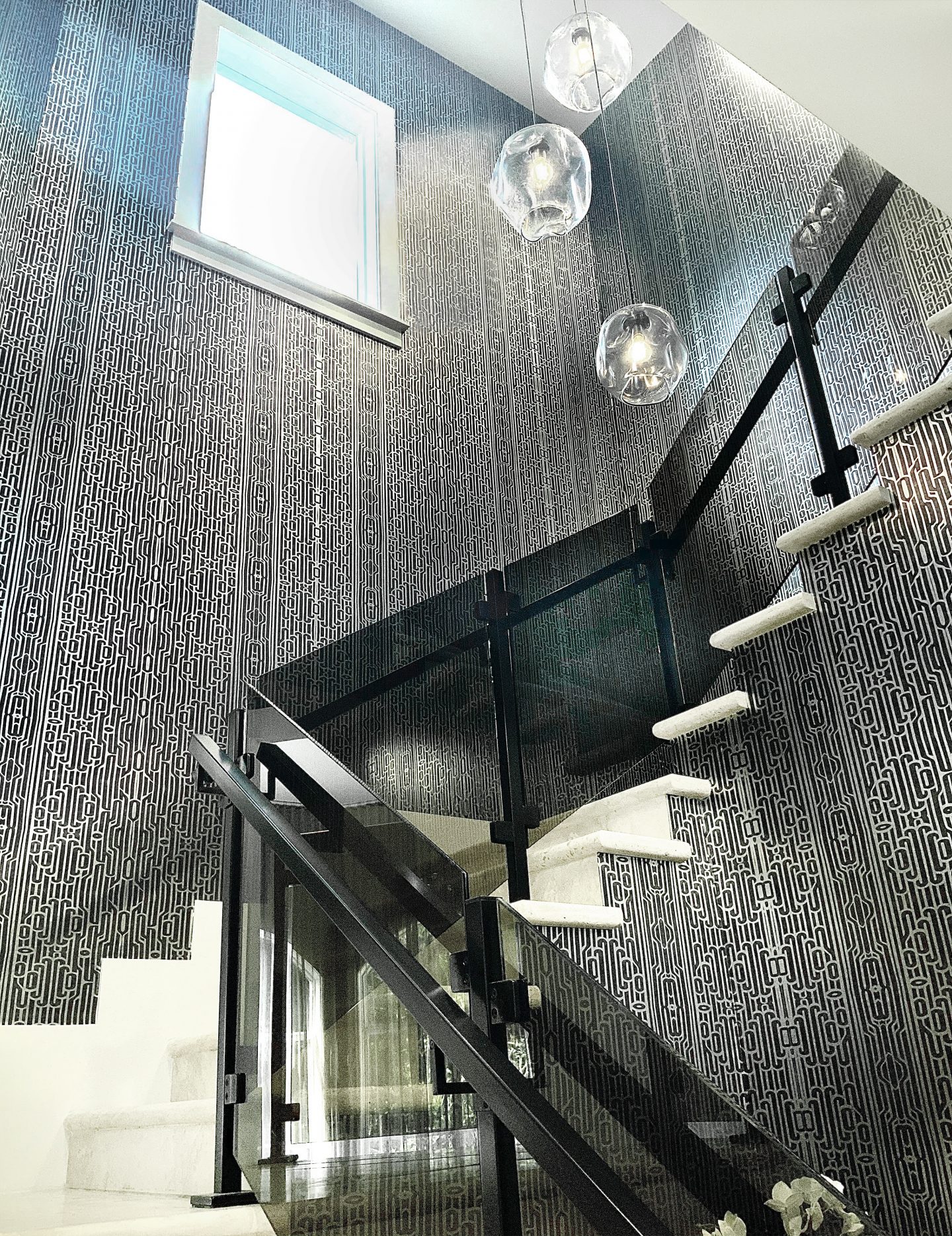

Patience is a word that comes to mind when I see your pieces. Is that an essential trait in your process?
Patience? Well overall I’m not a patient person. But I definitely am when working with my art. I don’t even think of myself as being patient or being relaxed. It’s kind’ve like a meditation. I’m lost in my head; it’s just one of those things where when you like something, you don’t even think about it, you’re just in it. You’re in it, and you’re working. But I feel like when I don’t work on my art for a very long time, it does mess with my head and it does make me patient and more relaxed though. It’s like my yoga in a way.
Your work has been featured at Scope Art Fair in Miami. How was that experience?
It was great, Edge Collections and I built that booth together and we put a lot of pride and joy into it and it was a great experience. It was hard, it was a lot of work but at the end of the day, it brought us closer and made me realize the evolution of where art is going and how physical work is necessary but at the same time now with this digital age, you don’t need to go to an art show anymore. You can just see it through your phone. So it’s just kind of one of those things that made me question. Art shows are necessary but for this next generation, are they going to be necessary and how things can change with business. My Instagram alone @_flekz_ has given me such a wider audience than I could ever have imagined.
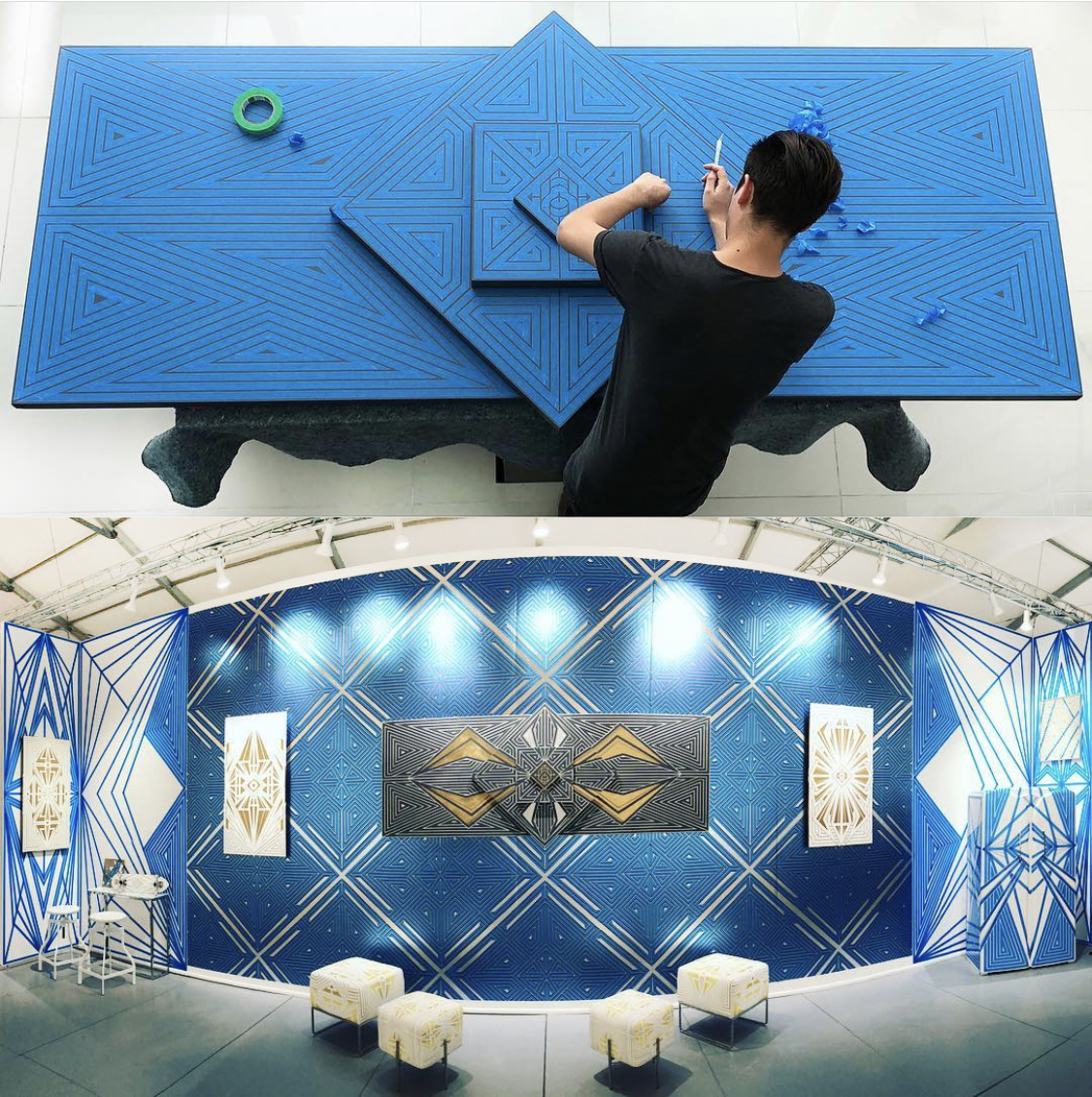
How has your life influenced your work?
When I was first growing up, my life was pretty rocky. My family was very poor. So I guess growing up, I was always seeking that perfection, something more structured. In the beginning I wanted to create it with my work. Obviously, it’s not like that anymore. The design style just stayed with me. Definitely when growing up, the hardships and the struggle really had an effect on the design.
Much of your work is quite grand in scale. Could you tell me about the largest original piece you’ve created.
The largest piece was an art piece not a mural. It was 3ft x 8ft and the whole piece was foldable kind’ve like a table and it had different layers on top on the center of it. So it looked like a diamond with a backboard, and it was huge. It was a large piece; I think it weighed at least 200 lbs. It was one of those things that made me realize that it’s an amazing piece but with so many flaws to it. Being big doesn’t mean you can half ass it in anyway. It’s needs to be as perfect as any other piece that you make.
You mentioned mural work. Can you tell me more about that?
My mural work is very similar to the art pieces that I create but obviously on a much larger scale. I personally love working on murals more than art pieces. I think with a mural, you can capture so many different elements. But at the same time, it’s just one of those things that the way it looks on a larger scale is so good; that’s what I pride myself in is the murals. It looks so good.
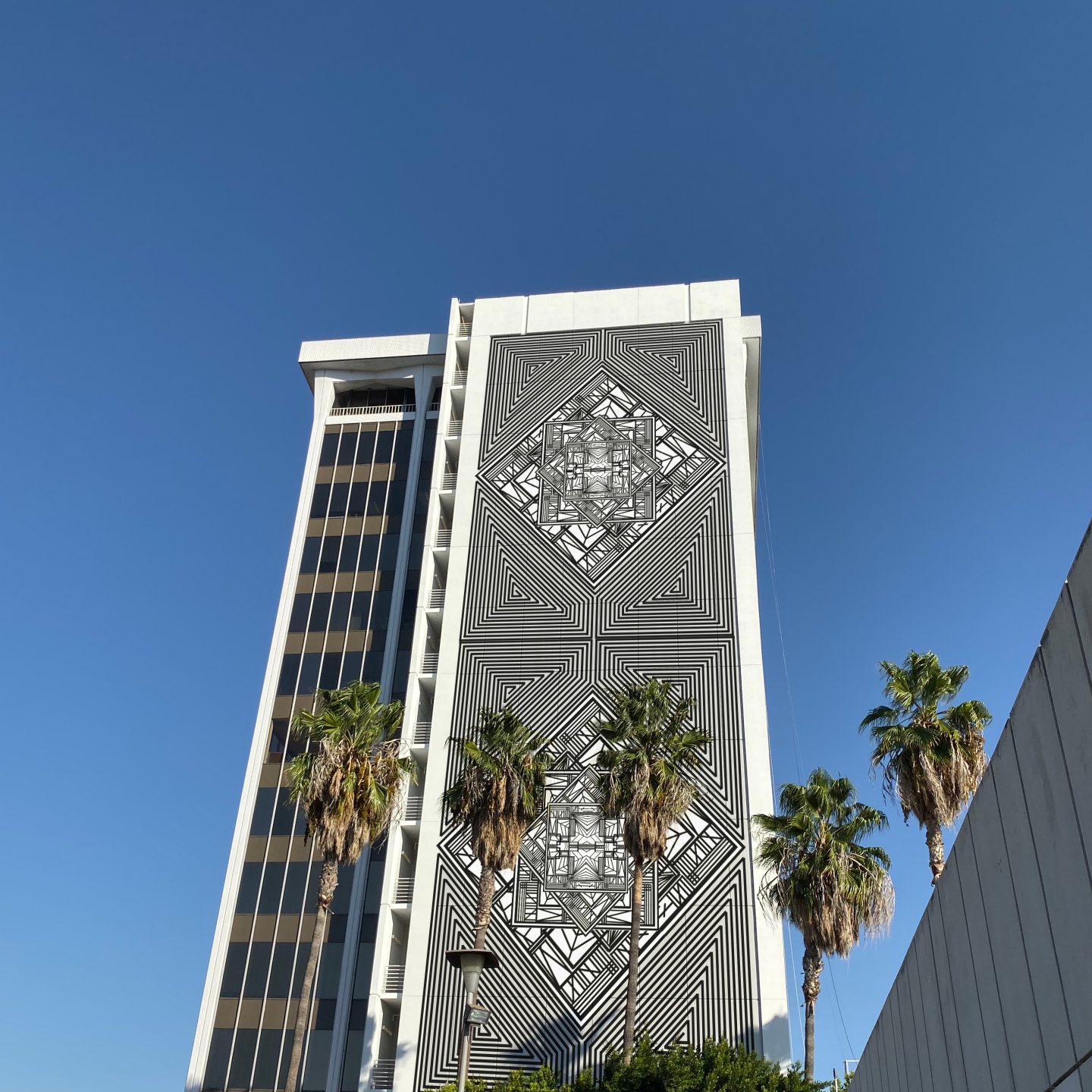

Tips for aspiring artists?
Keep your feet on the ground. Don’t get lost in the sauce. Like any small amount of success; it might look permanent in the moment, but don’t think that because, at any moment you are in your career, you always have to keep working and elevating your work and making sure that you feel good and that it’s going in the right direction and that your fans like it as well. You have to balance everything in order to be successful. Especially now because there’s so much competition online.
What do you know for sure?
I know for sure that I’ll be working on my art for the rest of my life. I don’t know how I’d live without it.
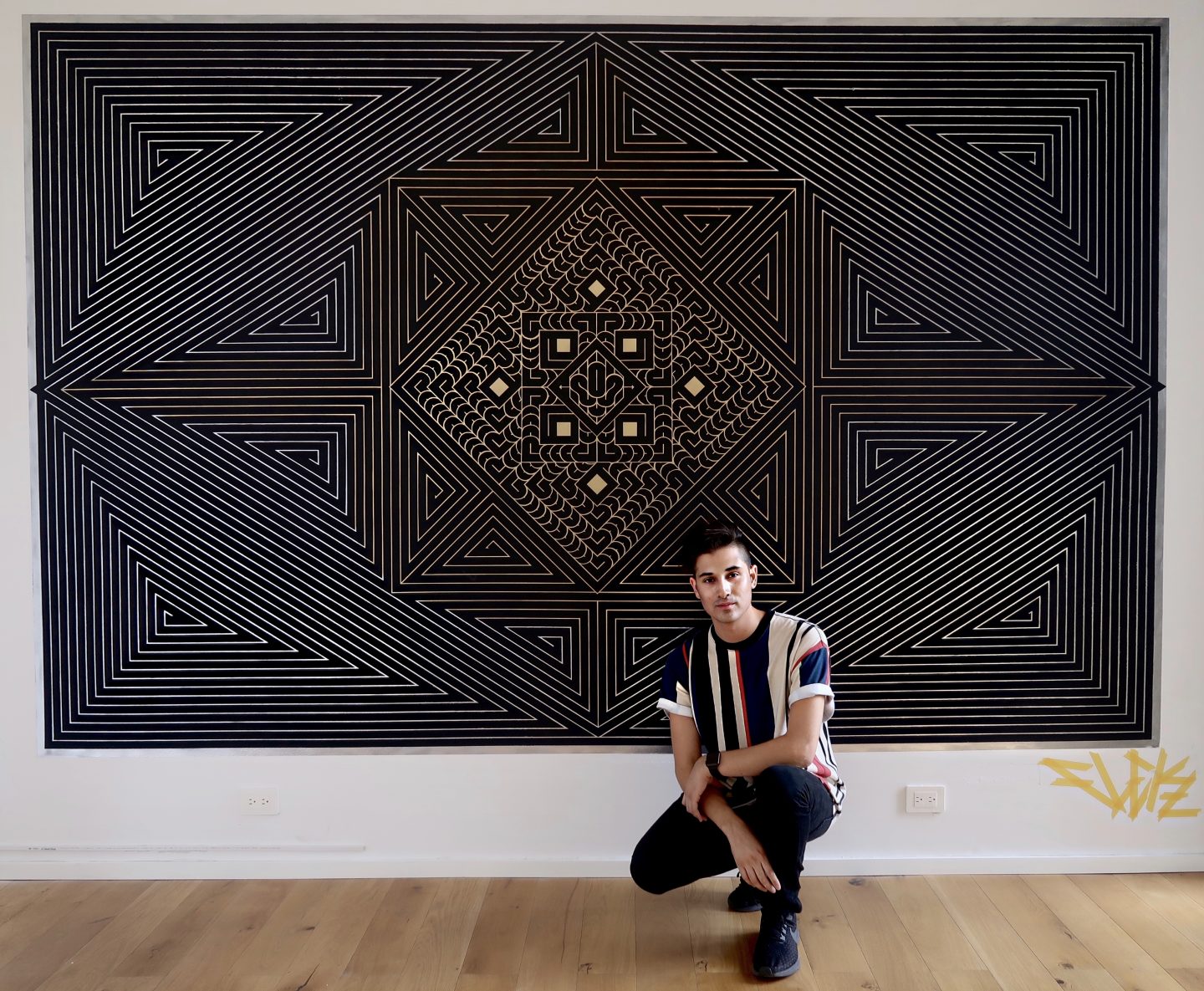
- Comedian Matteo Lane– HIS RECIPE FOR SUCCESS - August 3, 2022
- Spencer GarrettThe Winner’s Circle - May 9, 2022
- WINTER 2021 GIFT GUIDE - December 10, 2021
